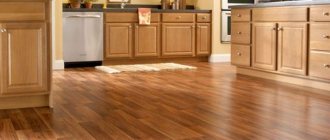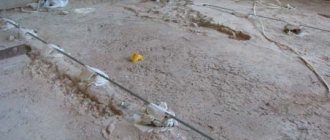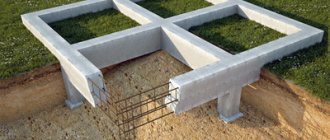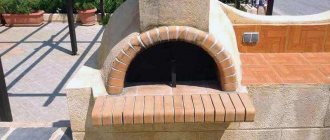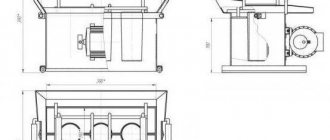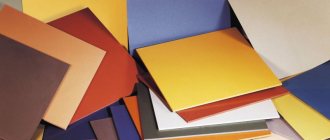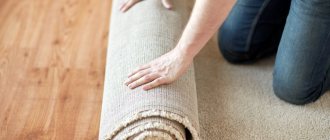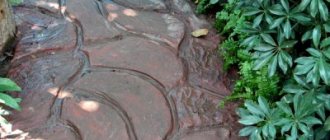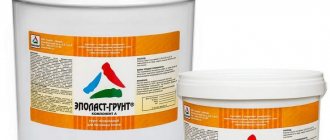Please rate the quality of the article Rating:
5.00 (1 ratings)
X
Carpet underlay is a given when purchasing; we will look at this below for those who have doubts.
Carpeted floor coverings have been used for a long time, and what's more, they have become popular. There was a time when it was quite difficult to get a beautiful and large carpet for the floor and carpet was considered almost a luxury item. Now available to everyone. Rolled carpets or simply carpet are produced and sold in huge quantities. The soft covering can have not only a printed pattern, but also complete scenes. Carpet has earned its popularity solely for its affordable price, ease of installation and practicality.
Why use underlay
The question of why a carpet needs an underlay can be answered briefly as follows - it improves the performance characteristics of this floor covering many times over. It improves so much that in modern repairs and construction this element of flooring has even become considered mandatory, and almost every first repairman recommends it for use. In some ways, this is, of course, overkill (regarding the obligation). But you can't argue with the fact that the floor is getting better. What exactly does using carpet underlay provide?
- The degree of wear resistance of the surface increases - carpet laid using a backing does not come into contact with concrete (with a material that is many times stronger than it), as a result of which the coating wears out less.
- Leveling properties of the underlay - everyone knows very well from laminate that a dense, but at the same time soft underlay smoothes out minor unevenness in the base of the floor.
- The strength of the material increases when pressure is applied to it - the backing acts as a shock absorber, which prevents furniture marks from appearing on the surface of the carpet, no matter how long it stands in the same place.
Underlay for carpet on concrete photo
This concerns the problems that such a layer between the carpet and the base of the floor helps to solve. But besides this, this material also has a number of less significant advantages, which will not be superfluous to know about.
Choosing a carpet fastening technology
In this case, we unroll the roll on the floor, level it and secure it against the wall using a plinth. First we fasten the baseboards installed along the length of the room, and only then the baseboards located along the width. In large rooms, when laying several fragments or with a large number of edges and joints, we use double-sided tape to securely fix them.
- 1. Glue.
- 2. Free.
- 3. Tape.
- 4. Stretching.
- we lay out the canvas for several days in the room on the floor and let it level out;
- after that we roll it up to the middle on one side;
- Apply glue evenly to the surface near the roll;
- gradually roll out the carpet, pressing it tightly to the base with a heavy roller;
- fix one side and proceed to gluing the other;
- trim off the excess around the perimeter;
- We fix the plinth to the wall.
Advantage of the glue method:
Disadvantages of this method:
Loose carpet installation is the most economical method. We fasten the carpet with skirting boards. An important point is the presence of allowances on each side, which should not exceed 15 cm.
Carefully smooth the surface, only then cut off the excess material. We secure the remaining carpet with baseboards. We secure it near the doorway using a threshold or a metal strip.
The advantages of this method:
Disadvantages of this method:
Installation using adhesive tape is quick enough and does not require additional costs. Take double-sided tape. We create a grid on the floor in advance, the cell size of which is 50x50 cm. Having created the grid, remove the outer part of the tape and immediately glue the carpet. The resulting excess is cut off upon completion of installation. Be sure to leave allowances on each side, as is done with the free installation method.
Advantages of this method:
Flaws:
Stretching. The method involves stretching the carpet around the room without additional fixation. To do this, we use grippers, placing them around the entire perimeter of the room. We also prepare wooden slats with nails.
As you can see, all the basic preparatory and installation work can be done on your own. The main thing is knowledge of installation technology, correctly selected flooring method and surface preparation, which guarantees a successful result in the form of a perfectly flat floor and a long service life.
Conduct a survey on the topic “is carpet underlay necessary at all,” and many will answer that it is not needed. After all, carpet is a warm, soft and durable covering that hides minor differences in the floor plane. I'd like to believe it. But experts have a different opinion. They believe that the quality of a floor structure is determined by several factors. One of them is the use of underlay, including under carpet.
Today, manufacturers offer two types of underlays used to level the floor base under carpet:
Let's look at the most popular of them.
This is a tile material that is bonded to the base of the floor using B-2 adhesive.
A very important point is that it is necessary to strictly monitor the tightness of the contact of the plates to each other. No gaps or cracks - the floor must be monolithic.
The first sample can be used under carpet if the latter is installed on the floor using stretching technology. Its essence is that the floor covering is stretched on special hooks or gripper slats.
This type of backing material is made from crumb rubber using the hot pressing method.
Since carpeting is most often installed in children's rooms, it makes sense to splurge and purchase a cork underlay for carpet specifically for this room. It will soften the already soft material and increase its safety. After all, children most often play on the floor.
This is the most common option. Moreover, it is the cheapest and quite reliable.
As a result, the carpet underlay becomes a reflector, hydro, steam and heat insulator all rolled into one. The most important thing is that, as in the case of rubber samples, this one has an important quality - it is not afraid of water and high humidity. So you can safely clean with a washing vacuum cleaner.
Experts guarantee that you can walk on thick slabs laid under carpet even with shoes on. In this case, you will never push through the material, although it is easily cut with a sharp tool. This is such a paradox.
Attention! Carpet underlay can be made not only from the pure materials discussed above. Manufacturers often offer combined options that are several times better than usual. But they also need to be chosen correctly.
Identifying them is not so easy. But experts suggest one effective way. Take the backing in your hands and crumple it. If it loses its appearance, and this happens instantly, it means that the material in your hands is not of very high quality.
Some types of underlays are laid on the floor base with fixation. Typically, adhesives are used for this. But this is not at all necessary for rolled materials. Here it is important to spread the underlay correctly so that it completely covers the floor with a high degree of tightness.
Its composition will depend on the base material - concrete or wood. Waterproof PVA glue is most often used. But manufacturers need to pay attention to the fact that such glue promotes shrinkage of the backing material, especially those made of natural textures. Therefore, it is better to use polymer-based adhesives for them.
Attention! Before starting work, it is necessary to place the adhesive composition and carpet backing in the room where they will be used. There they must undergo acclimatization.
Special mounting option
Installation of floor coverings
To do this you need:
This method is more suitable for finishing wooden floors. If you have settled on it, and the floor in the house is a concrete floor slab, leveled with screed, then we recommend covering the base with OSB boards or plywood. Fastening of wooden tile materials is carried out using self-tapping screws.
We hope you understand that carpet underlay is a necessary thing, and in some cases even super important. If you want the carpet to last twice as long, we do not recommend laying it without a backing.
- How to properly install carpet
- How to choose the right underlay for laminate flooring
- Types of cork substrate and its laying scheme
- Let's figure out which underlay for laminate is better - an overview of existing types
You are now here: Home » Installation » How to lay carpet on a wooden floor: installation technology
Benefits of using a substrate
The benefits of using carpet underlay are numerous. And the most important of them is an increase in the service life of the floor covering - the additional costs of purchasing it are more than compensated by the increase in service life by almost half. In addition, among the main advantages of the substrate, the following points can be highlighted.
- By using an underlay, you create a softer floor covering that is much more comfortable and comfortable to walk on.
- The substrate is a fairly good thermal insulation material. Carpet underlay on concrete allows you to get rid of all types of drafts that are usually present in the corners where the floor and walls meet. In general, the cold surface of concrete in the case of a substrate is not felt at all.
- By using the underlay in the apartment and laying it on a concrete or wooden floor, you create additional sound insulation - the dense and porous material used for its manufacture does the best job of muffling the steps of the owners, as well as noise coming from the lower floor.
Underlay for carpet on concrete floor photo
In addition, there is a very simple installation that minimizes the cost of covering the floor with carpet. Both the underlay and the carpet itself are installed on the floor within an hour, even if the person has no experience.
Adhesive fixation of carpet
The adhesive is used when laying carpet in rooms where there is constant foot traffic, as well as simply in large rooms. The adhesive is usually applied to the entire back surface of the carpet or directly to the floor, after which the fabric is pressed to the floor. If you know how to glue carpet correctly, then such fixation can guarantee the absence of swelling, wrinkles and deformation of the material. This process can be divided into several stages:
- Pre-level the surface and clean it thoroughly.
- Apply adhesive to the substrate using a notched trowel and spread it evenly over the surface.
- Glue the backing (in large rooms it can be done in fragments).
- When the glue has dried, a piece of carpet is laid so that its edges near the walls have a small allowance.
- Fold the canvas in half and apply glue to the back of one of the halves or to the floor itself.
- Lay the glued fabric on the floor, leveling it and pressing it tightly.
- Then do the same with the second half of the canvas.
- Near walls and corners, the material must be trimmed and pressed tightly.
- Fit the carpet under the baseboards using a special tool. Skirting boards are fixed to the walls with self-tapping screws.
Video about laying carpet with glue
Advantages of the glue method
- the coating can last longer than with other types of installation;
- you can use several panels;
- you don’t have to worry about the appearance of wrinkles and bubbles;
- Cleaning with a washing vacuum cleaner is allowed.
Disadvantages of the glue method
- the complexity of the method;
- the coating becomes disposable;
- If there is a “warm floor” under the carpet, then you need to monitor its temperature so that the adhesive layer above it does not collapse.
Choosing a carpet underlay
As a rule, by analogy with the underlay for laminate, when choosing a similar addition to the carpet, people pay attention mainly to its thickness, which is not entirely correct. The thickness of the substrate is undoubtedly an important point and it is selected based on the degree of curvature of the existing floor and its thermal conductivity characteristics (the colder the floor, the thicker the substrate it is better to purchase), it is produced with a thickness of 2 to 10 mm. In addition, there are other points that it would be at least unreasonable not to pay attention to.
- Porosity, on which such indicators of the substrate as its elasticity and density largely depend. Here, again, the fundamental factors in choosing density and porosity are the curvature and thermal conductivity of the floor. In principle, here you can even proceed from convenience - the too soft substrate under your feet is pressed, and walking on it is not entirely comfortable.
- Plastic. Carpet underlays with low ratings of this type last less and break down over time under the weight of heavy furniture.
- Manufacturer. Its quality largely depends on his attitude towards his product - in principle, this point is no longer a secret to anyone.
- An important point is the ability of the carpet backing to allow moisture vapor to pass through - if this material does not “breathe”, then the likelihood that dampness will begin to accumulate underneath it and fungus will develop is very high.
Underlay for carpet on a wooden floor photo
And the most important point is the type of material, which determines all the technical characteristics described above. This is worth talking about separately.
Tension method (stretching)
To fix the coating during stretching, you will need to use grippers - slats into which two rows of nails are driven at an angle of 45 degrees. To stretch the material, you will need a special device - a kicker or stretcher. In small rooms you can get by with a knee kicker, but in larger rooms you will need a more powerful tool.
With this method of laying carpet, the following stages can be distinguished:
- Preparing the base.
- Fastening grippers along the walls with the nails oriented from the center of the room.
- Laying the substrate and fastening it through 200 mm with staples.
- The smooth factory edge of the material is laid along the wall.
- The material is attached with a kicker to the gripper: having secured the teeth of the tool about a couple of centimeters from the slats, you need to strike the pillow, which fixes the carpet on the nails.
- The canvas is stretched with a powerful stretcher, starting from the corners.
- Having inserted the teeth of the stretcher into the material approximately 150 mm from the edge, they should be fixed, and then pull the ends onto the grippers using a kicker sequentially in all directions.
- The resulting excess material can be trimmed or simply folded.
- Then install skirting boards around the perimeter of the room.
If you choose the most suitable method of laying carpet for a particular room, then this floor covering will remain comfortable and neat for many years.
How do you prefer to lay carpet? Tell us about it in the comments and explain your answer - your advice will be interesting to other builders.
Share this article with your friends:
When decorating the premises of country houses or city apartments, carpet is increasingly used. This cozy floor covering is very practical, it is a good insulator and is pleasant to walk on even…
» data-url=»https://krutopol.com/kak-pravilno-stelit-kovrolin.html» data-image=»https://krutopol.com/wp-content/uploads/2016/08/kak-pravilno -polozhit-kovrolin2-450×313.jpg" data-title="How to lay carpet on concrete and wood floors. Installation methods using glue, tape, free fixation">
You will be interested in:
- How and with what to cut carpet at home? Instructions, tips, videos
When laying carpet, it always has to be cut according to the geometry of the room so that it can lie flat and free on the floor. And this is where the proverb comes in handy...
What material to choose a substrate from?
Modern manufacturers use four main types of materials to make carpet underlays, which have different quality characteristics and are designed for different situations.
- Polyurethane. Substrates of this type are made on the basis of artificial jute and plain paper. As a rule, either polyethylene or felt is used as the top layer, which gives the lining special elasticity. These are very thick substrates that are laid using stretch-stretch technology and have a considerable thickness (from 5 mm minimum). In most cases, this is a vapor-proof underlay that can only be used in low-humidity areas.
- Rubber crumb – hardness and high density. Such substrates have a very small thickness, but despite this, they perfectly support the weight and level the surface of the existing floor. When walking on a floor with a rubber backing, a very pleasant springing effect is felt. The material goes well with natural carpet, but, again, is a waterproof material.
- Polyurethane foam is a very durable and dense substrate with high technical characteristics. As a rule, it is used when laying carpet in public buildings with high traffic. This is not a vapor-permeable material - quite the contrary, it is a waterproofing underlay that prevents moisture from entering the carpet from the floor. An excellent option for a private house in which the floors are poured, as they say, on the ground. It should also be noted that the scope of application of this lining material is limited by the evenness of the base of the floor (there should be virtually no curvature) and the humidity of the room.
- Cork is a natural material with hypoallergenic qualities. Cork lining for carpet not only meets all the necessary characteristics, but also has a vapor-permeable ability, which is especially valued in it. Equally easily, cork absorbs excess moisture and releases it back when the air in the room is dry. Cork backing for carpet is made from oak wood, which, after special processing, is compressed to the required density. This production technology almost completely eliminates the formation of mold and mildew under the substrate. In all respects, cork lining material can be called the best option for almost any operating conditions - it can be laid on both a wooden and a concrete base with equal success. It is based on recycled oak wood, compressed to the required density.
Carpet backing photo
In conclusion, it should be added that the cost of carpet underlay directly depends on the material from which it is made.
Carpet backing
When purchasing carpet, we dream that it will serve us for as long as possible, and at the same time retain its original appearance. To achieve this, you need to purchase a carpet backing, as it will increase the service life of the coating. The substrate also provides its own additional advantages:
- The substrate plays the role of thermal insulation and sound insulation;
- The carpet will last almost twice as long;
- The underlay has shock-absorbing properties when walking on carpet.
Gives carpet elasticity;
Currently, there is a huge selection of materials that can be used as a substrate, the main rule is elasticity.
How to lay carpet underlay
There are two technologies for laying carpet underlay. Both of them are applicable to both concrete and wooden floors, which must first be prepared, that is, leveled as efficiently as possible and cleaned of dust and dirt.
- The floating method of laying the underlayment does not involve rigid fastening of the subfloor and the lining material. A very simple option, but it has one drawback - if the carpet is laid carelessly, the backing may become wrinkled or wrinkled. Strips of lining material are laid along the long side of the room. After rolling, the material rests for a day, after which it is moved towards each other (to remove gaps between the strips) and glued together with ordinary tape.
- Adhesive technology for laying underlay under carpet. This technology can be called rational only in the case when a loose substrate is installed, which tends to wrinkle. Despite the fact that the technology involves the use of glue, it still looks quite simple. First, the base of the floor is cleaned of dust and debris, then its surface is lubricated with glue, onto which the underlay is laid, which, in turn, is smoothed with a roller or simply with your hands. Again, despite the use of glue, the seams with this method of installing the backing are still connected to each other with tape.
And in conclusion to the topic of what carpet underlay is and how it is installed, there is only one thing left to add - in particular, to say about the highest quality manufacturers of these products. First of all, this is the Napa company - it produces underlay for any base, designed for carpet with a thickness of no more than 20 mm. BerberMax is also a universal underlay for wooden and concrete bases, designed for use with carpet up to 15 mm thick. HC-Blue - the substrate of this manufacturer is characterized by high strength, which is achieved thanks to the special reinforcement of the base layer of the material. Used with carpet up to 20 mm thick. It is impossible not to mention a company like Tuplex - we can say that it is the undoubted leader in this product segment, whose material has very high characteristics. According to the manufacturer, it can even be placed on heated floors. Well, if we talk about cork linings, then we can mention the material from the Ipocork company - they are the best here.
Author of the article Alexander Kulikov
Glue installation method
That is, a method of gluing carpet to the base of the floor using special glue. This method is better suited for people who do not often change the interior of their apartment. Perfect for wooden floors.
The floor is first cleaned and dried, and then the covering is laid. Slowly and carefully bend it to apply glue. You can use a serrated dispenser. We apply the glue to the carpet, leave it for about ten minutes, and then glue it to the base of the floor, and roll it over the carpet with a roller, but it should be heavy.
If a carpet of several sheets is installed in a room, the joint must be made in a special way. There is no need to glue the edges, but to overlap one edge over the other by about 5-7 cm. Then immediately cut off both edges in the middle, and coat the base of the floor under the joints with glue, and then roll it with a roller.
Principle of installation of the substrate
No matter what anyone says, carpet is a very comfortable material. Although, there are also plenty of skeptics - just read the reviews that this is supposedly a solid dust collector. This statement looks ridiculous, because dust forms on any surface, and there will be no less dust on parquet than on carpet. Let's reveal a secret: timely cleaning is the key to a clean floor!
No other covering would have made this room cozier.
A much more significant issue is the correct installation, thanks to which
the coating will be smooth and neat, and its service life will double.
What is it and why is it needed?
The substrate is a rolled material with high strength and insulation. Its thickness should be from 0.5 to 1 cm - these are the indicators that characterize high-quality material.
The substrate is necessary because it performs the following important functions:
- Able to soften differences in floor height or small potholes.
- The underlay significantly affects the durability of carpets, as it prevents them from coming into contact with the primary floor covering.
- If you decide to lay high-pile carpet in a room, then the need for underlay is incredibly high. The fact is that such a carpet can “bend” on an uneven floor, which will worsen its base, which serves as its skeleton. Violations of the base will lead to swelling or fraying of the carpet.
- By choosing a velor carpet and placing an underlay underneath, you will achieve greater softness, which is quite a nice feeling if you like to walk barefoot.
- A budget baseless carpet will quickly fail if special material is not laid underneath it, which will contribute to its preservation and long service life.
Laying methods
In order to correctly place the base under the carpet, you need to arm yourself with certain knowledge, this way you will avoid mistakes and unexpected costs.
On concrete
In this case, proceed as follows:
- Concrete floors should be cleared of debris and dust.
- Determine whether it needs additional leveling, and if it is necessary, then you should not neglect this step, as this will have a bad effect on the carpet itself and the layer will not protect it from deformation.
- After rough work with the floor, you can begin laying the underlay. This can be done either without glue or with a reliable fixing component. The need is determined by the substrate material and its resistance to wrinkles.
- In the case of laying a base under a carpet that does not have waterproofing, additional work is carried out to lay a film of a certain thickness.
- Carrying out these measures is mandatory, as it significantly affects the further use and care of the carpet.
- You can lay the underlay on the prepared floor, securing it with double-sided tape.
On a wooden floor
The nuances of working with this flooring:
- Pay attention to the presence of defects such as cracks or “walking” boards. Eliminating them will help prevent deformation of the top coating and increase its service life.
- Calculate the required amount of materials by measuring the floor parameters of the room and calculating their footage. The standard roll width is 1 m, and you select the length individually.
- It is not advisable to level such a floor using a self-leveling screed; it is better to use plywood or chipboard.
- It is best to fix this type of coating with self-tapping screws or nails, which will ensure reliable fastening and prevent distortions in the future.
- In some cases of leveling, two layers of plywood are laid, and so that the joints of the sheets do not coincide (like brickwork).
- Then proceed to laying the substrate itself, choosing the appropriate method.
- The joints are fastened using construction tape.
How to choose?
When faced with choosing a substrate, you should pay attention to the following features:
- If the carpeting consists of natural material, then it is better to choose a cork base. Combine materials by origin.
- If it is synthetic, choose a polyurethane base that matches it; such materials will be better and easier to connect with each other.
- When purchasing, pay attention to the appearance of the substrate; it should have a fairly dense structure, although not very rigid.
- Upon tactile contact and compression, the material should respond well to influence and quickly restore its original shape. Otherwise
- case, do not purchase such a product.
- A high-quality material must have a quality certificate and not have a strong odor; the structure of the substrate must be uniform and have a surface of the same thickness.
- When laying on a concrete floor, select a rubber base; this will ensure a long service life of the soft coating.
